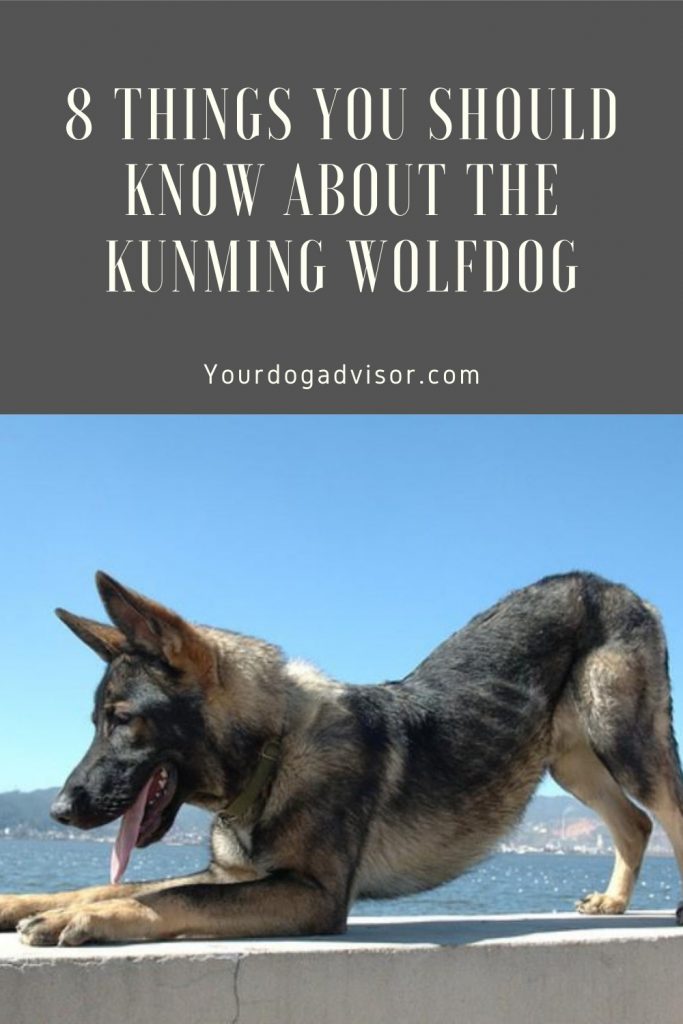Most of us who are familiar with dogs know that the beloved canines we now keep as pets are descended from wolves. Although experts disagree on exactly when it happened, the genetic divergence from wolf to dog probably occurred about 20,000 to 40,000 years ago, And while it seems almost impossible given their enormous diversity, all 340 recognized dog breeds in existence today are direct descendants of those first domesticated dogs. Even more amazing, they still share enough DNA with their wolf ancestors that the two species can interbreed and produce fertile offspring. That’s why, thousands of years after wolves became domesticated, we still encounter wolf hybrids, also known as wolfdogs.
The grey wolf (canis lupus) has the same number of chromosomes as the domestic dog (canus familiarus) which allows the two species to hybridise and produce fertile offspring.
Many dogs resemble wolves, but are not true wolf hybrids. The Alaskan Malamute and Siberian husky, for example, are both large, strong, working dogs that were bred to resemble wolves, but they are not really wolfdogs. Nor is the German shepherd or its cousin, the Belgian malinois, no matter how closely they resemble wolves. In fact, true wolfdogs are relatively rare, in part because the wisdom of crossbreeding wolves and dogs is a matter of considerable debate. But some true hybrids do exist. One of these is a rare breed from Asia known as the Kunming WolfDog. Keep reading to learn more about this interesting breed.
Contents
No.1. The Kunming Wolfdog Hails from China
As you may have guessed from the name, the Kunming Wolfdog originated in China, in the province of Yunnan, whose capital city is Kunming. Details about its origin are somewhat sketchy, but it’s said that the first 10 wolfdogs (which purportedly were wolf hybrids) were brought to Kunming from a military training camp in Beijing in 1953. The Chinese government then appropriated an additional 90 dogs deemed suitable for training from citizens in Kunming and the neighboring province of Guizhou, and put them through “doggy boot-camp” The top 20 performers were then chosen to breed with the initial 10 wolfdogs and a selection of German shepherds imported from East Germany to create what is now known as the Kunming Wolfdog (also known as the Chinese Wolfdog or the Kunming dog for short).
A Chinese Wolfdog assumes a playful puppy pose. Note the tiny back feet! – Source: My Own Kunming Dog by Bigsteve CC BY-SA 3.0
No.2. Kunming Dogs Look Very Much Like German Shepherds
Given their murky history, it’s hard to know what breed or breeds were the true ancestors of the Kunming Wolfdog. But there’s no question that the breed closely resembles the German Shepherd. Typically standing about 25-27 inches at the withers and weighing about 65-85 pounds, the dogs are large and muscular, with a long-ish body and a wedged-shaped head and surprisingly small back feet. The ears are upright and set towards the front of the skull, the round eyes are keen and intelligent, and he tail is full and long. Most often tan in color with a black muzzle and saddle, the dogs may also be almost white with a tan muzzle and tan markings on their backs. Although less common, the predominant color also may be brown or rust.
The Kunming Wolfdog looks very much like the German Shepherd breed
No.3. Kunming Dogs Can Be Good Pets
Although bred as guard dogs and trained for and search and rescue by the Chinese military, Kunming dogs make loyal, loving family pets. They are very smart and immensely trainable, which makes them wonderful companions for adults and older children.(Families with young children are probably better off with a more child-friendly breed.) Despite their size, they tend to be quiet and reserved and adapt well to apartment living as long as they get a good dose.of daily exercise. That being said, like all large working dogs, they need a strong leader and clear, consistent training to be at their best. Socialization and obedience training should be started early and continued throughout the life of the dog.
A Chinese Wolfdog training with his owner.
No.4. Kunming Dogs Are Hard to Come By
Although the U.S. is full of Chinese imports, very few Kunming Wolfdogs dogs have thus far made it to America’s shores. The dogs were only recognized as a distinct breed by the Chinese government in 1988, and are not yet recognized by the AKC. As of this writing, there are no Kunming Wolfdog breeders in the U.S.
No.5. Kunming Dogs Need Plenty of Stimulation
The Kunming Wolfdog is,above all, a working dog, and will not be happy if it is left on its own to lounge around the house with nothing to do. Smart and energetic with incredible stamina, these dogs love to learn and will quickly master almost any task. So if you decide to invite a Kunming dog into your home, be prepared to devote a fair amount of time to training and exercise. At minimum, the dog will need a long walk (at least 45 minutes) every day, and several play/training sessions a week to keep them physically and mentally fit. They love an off-leash game of Frisbee or trotting along next to their owners on a bicycle, and can excel at agility, fly-ball or Schutzhund training once they’re adults. Because they tend to form close bonds with one person, Kunming dogs can also do well as a service dog.
A Kunming puppy learns how to jump and play.
No.6. Kunming Dogs Are A Healthy Breed
Although not a lot is known about the history of the Kunming dog, the selective breeding practices that created the breed more or less ensured that they would be physically healthy dogs. They have a relatively long lifespan of 12 to 14 years and don’t appear to be prone to any hereditary medical conditions, though it’s hard to know for sure since they are so rare. It might be reasonable to surmise that they could suffer from congenital hip dysplasia, since this is a common finding of the German Shepherd breed. But there is no documentation at this juncture that that’s the case.
Kunming Wolfdogs are usually tan and black, but may be cream and grey or brown, rust or even mostly black.
No.7. Kunming Dogs Shed
Like their German shepherd ancestors, Kunming Wolfdogs have thick, heavy double coats, although the wolfdog’s coat is the shorter or the two. And like all double coated dogs, the Kunming dog tends to shed quite a bit, especially in the spring when it loses its heavy undercoat.
With that being said, shedding can be kept to a minimum with weekly or even trice-weekly brushing — especially as the weather warms up. There are any number of good brushes on the market today that will do the trick. Just be sure to pick one that’s designed to get all the way down to the dog’s thick undercoat. If you’re not sure which one to buy, the FurMinator Deshedding tool is always a great choice.
No. 8. Kung Ming Wolf Dogs Eat a Lot!
When a Kunming dog is cared for properly, it gets lots of exercise and burns a lot of calories. So it’s no surprise that these dogs have a very good appetite and eat more than the average dog.And while they don’t have special nutritional needs, per se, they will do best on a high-quality, high-protein dog food such as Wellness CORE, which will adequately support their energy needs (Feed about 3-4 cups a day for a 70-80 pound dog.) And since they will often devour their food very quickly, it’s a good idea to feed your dog a twice or even three times a day to avoid the risk of bloat.
My Own Kunming Dog by Bigsteve CC BY-SA 3.0

Jen Jones is a professional dog trainer and behavior specialist with more than 25 years of experience. As the founder of ‘Your Dog Advisor’ and the ‘Canine Connection’ rehabilitation center, she applies a holistic, empathetic approach, aiming to address root causes rather than merely treating symptoms.
Well known for her intuitive and compassionate approach, Jen adopts scientifically-proven, reward-based methods, encouraging positive reinforcement over punishment. Jen specializes in obedience training, behavior modification, and puppy socialization. Her innovative methods, particularly in addressing anxiety and aggression issues, have been widely recognized. Jen has worked with many of the world’s leading dog behaviorists and in her free time volunteers with local animal shelters and rescue groups.




